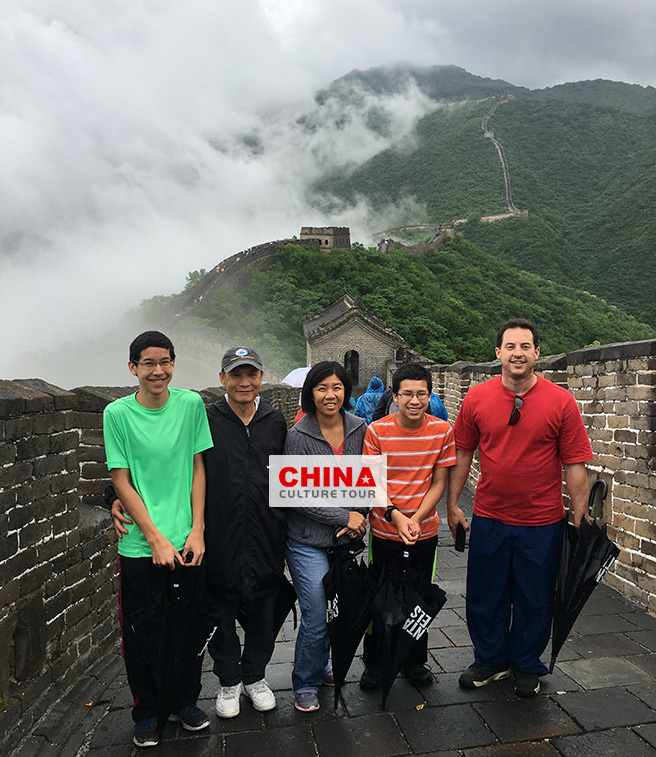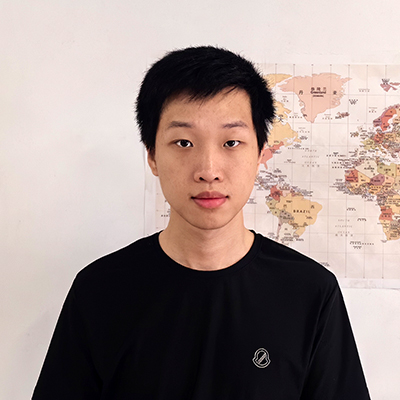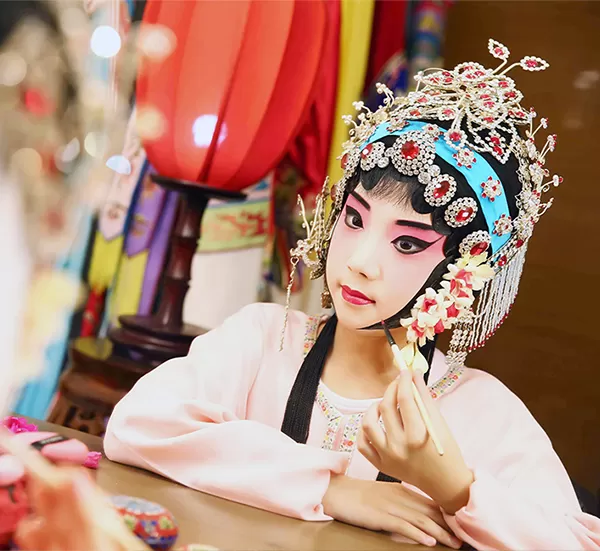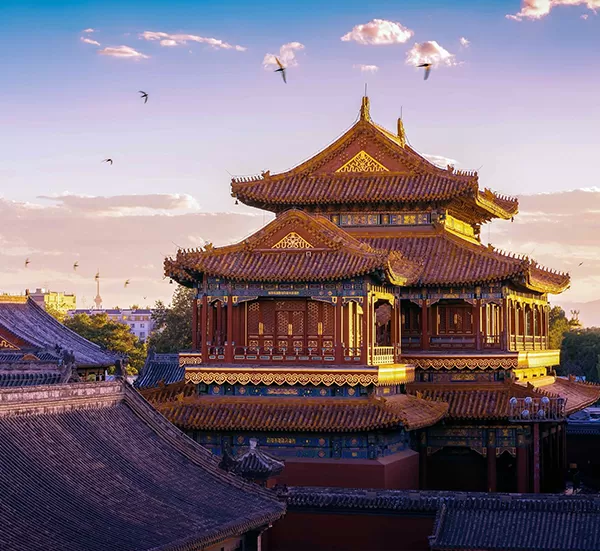Short Introduction to Beijing Local Culture: History, Custom, Diet, Nation, etc.
Beijing, abbreviated as "Jing", historically known as Yanjing and Beiping, is the capital of the People's Republic of China and the political and cultural center of the country. It is one of China's historical and cultural cities and ancient capitals, as well as a global leading city. Covering an area of 16,410.54 square kilometers, Beijing is located in the northern part of China, in the northern region of the North China Plain. It borders Tianjin to the east and is surrounded by Hebei Province on the other sides.
Beijing is one of the birthplaces of the Chinese nation, a world-famous ancient capital, and a modern international city. It brings together the rich cultural achievements of China from the Yuan, Ming, and Qing Dynasties, home to numerous historic landmarks and cultural landscapes, with the most UNESCO World Heritage Sites in the world.
Brief History
As early as the beginning of the Western Zhou period, King Wu of Zhou granted the title of Duke Shao to Beijing, and the ruins of the capital still exist. The descendants of the Yellow Emperor were also granted land in Ji, which is now the southwestern part of Beijing. Later, the Yan state conquered the Ji state and moved its capital to Ji.
In 222 BC, after the Qin state conquered Yan, Ji became Jixian County, which remained as a county-level name for the region, located in today’s Beijing, for a total of 1160 years until the Liao dynasty.
In the Sui and Tang Dynasties, it was known as Youzhou, sometimes also called Fanyang Prefecture. At the end of the Tang and the beginning of the Song Dynasties, they were ceded to the Liao dynasty. The Liao dynasty upgraded Youzhou to the status of Nanjing, also known as Yanjing, and established Youdu Prefecture.
In 1264, the Yuan dynasty renamed it Daxing Prefecture. In 1272, it was officially renamed Dadu Region, also known as Yuan Dadu, which became the transportation hub of all of China. From this period, Beijing became the capital of China.
In 1368, the Ming army captured Dadu, and Emperor Zhu Yuanzhang, aiming to stabilize the north, renamed it "Beiping" (Northern Peace). In 1403, after the Jingnan Campaign, Emperor Zhu Di took the throne and made Beiping the capital, renaming it Shuntian Prefecture and residing there permanently. In 1420, Beiping was renamed Beijing, and the capital was officially moved to Beijing.
During the late Qing Dynasty, Western powers introduced opium to China, leading to the Opium Wars. In 1900, the Eight-Nation Alliance invaded Beijing again, and many cultural relics were looted by the invading forces and rioters.
After the July 7th Incident, the full-scale War of Resistance against Japan broke out. Beiping was occupied by Japan. The Chinese Communist Party established the Jin-Cha-Ji Anti-Japanese Base Area and fought the War of National Revolution. On August 21, 1945, Japanese forces invading Beijing officially surrendered.
On January 31, 1949, Fu Zuoyi reached a peace agreement with the Chinese Communist Party, and Beiping was peacefully liberated. In September, Beiping was renamed Beijing, becoming the capital of the newly founded People's Republic of China.
Region Culture
"Old Beijing" refers to the traditional customs and ways of life of ancient Beijing. As one of China's ancient capitals, the core of Old Beijing culture is about following rules, respecting etiquette, and maintaining traditions.
Beijing’s Hutongs, originally derived from the Mongolian word for "narrow alleys" or "lanes", are not just the city's network of roads or traffic routes, but also the living spaces for Beijing's ordinary citizens. They serve as an important stage for the city's historical and cultural development. By walking through a few hutongs and chatting with the long-time residents, one can discover that each lane has its own story—full of anecdotes, historical events, and unique cultural atmosphere. Hutongs are like small folk museums, preserving traces of the social life of the people over the centuries.
The Beijing Siheyuan (traditional courtyard houses), though residential buildings, are imbued with profound cultural significance. They are a reflection of traditional Chinese culture. The construction of a Siheyuan emphasizes the concept of Fengshui (geomancy), from the selection of the site and positioning to the measurement and scale of each building. Beijing’s Siheyuan is world-renowned, and in ancient times, aside from the Forbidden City, royal gardens, and temples, most of the city's buildings were private residences like these.
Beijingers have a long history of keeping pets, which is also a significant part of their cultural heritage. Traditionally, pets in Old Beijing could be classified into four categories: birds, insects, fish, and animals. Pet-keeping was not only a hobby but an important aspect of cultural life. It brought joy and spiritual pleasure, and many Beijingers considered raising pets as an elegant pastime, similar to playing chess, tasting tea, or discussing art.
The Beijing Central Axis is a symbolic line that explores the relationship between heaven and earth, linking the past and the present, and unifying the cosmos with human existence. This axis represents the ancient reverence for heaven and the ideal of harmony between man and nature. It reflects the philosophical concept of "heaven and earth as one," symbolizing the pursuit of balance and unity between the natural world and humanity.
Beijing has always been a place of exchange and fusion between the agricultural culture of the Central Plains and the nomadic culture of the northern regions, and as the capital, it has welcomed influences from all over the country. In modern times, Beijing’s culture has also absorbed many Western elements, making it a blend of ancient and modern, Chinese and foreign. It reflects the inclusive and open nature of the Chinese people, embodying both traditional values and contemporary multiculturalism. This fusion is characteristic of a city that embraces both the classics and the new, while demonstrating the cultural openness of the Chinese nation and its historical and cultural ethos.
National Minority
Beijing is a city where diverse cultures converge, with a unique population distribution of ethnic minorities characterized by large dispersions and small settlements. It is home to all 56 ethnic groups of China, with the largest populations being the Manchu, Hui, Mongol, Korean, and Tujia peoples.
The Manchu people are one of the oldest ethnic groups in China, originally known as the "Jurchen." After Nurhaci unified the various Jurchen tribes and established the Later Jin, the Manchu ethnic group was formed. During the Qing Dynasty, the Manchu people organized into the Eight Banners, and their ethnic attire became known as "Qi (Banner) clothing" or "Qipao (cheongsam)". The Manchu are hardworking, brave, and intelligent people who are also adept at assimilating and innovating from external cultures.
The Hui people, also known as the Hui Hui or the Chinese Muslim ethnic group, are believed to have entered Beijing during the Liao Dynasty. The Hui predominantly follow Islam, and their culture has been heavily influenced by Islamic traditions. They are known for their commercial acumen, particularly in the food and jewelry industries, with many Hui people becoming affluent merchants.
As early as the Yuan Dynasty, Beijing had a sizable Mongol population. The Mongols are a bold and brave ethnic group, known for their love of drinking and horseback riding, which reflects their rugged and free-spirited character. Due to political reasons, the Han and Mongol peoples frequently interacted, and as a result, the Mongol culture in Beijing absorbed many elements of Han culture. Likewise, the Mongol language and lifestyle also influenced the Han people in various ways.
Diet Style
Beijing cuisine, also known as capital cuisine, is a combination of five distinct styles of dishes: Shandong cuisine, restaurant-style cuisine, Tan family cuisine, ethnic halal cuisine, and imperial palace cuisine.
Since ancient times, Beijing has been a hub for the exchange of goods between the agricultural economy of the Central Plains and the pastoral economy of the northern grasslands, served as the capital of five dynasties: Liao, Jin, Yuan, Ming, and Qing, making it long the political, economic, and cultural center of China. The convergence and exchange of cultures from around the world and the entire country has led to the formation of "Beijing cuisine", which is known for its eclectic nature, elegance, unique style, and self-contained system.
The local food culture in Beijing originally had strong similarities with that of Shandong, so Shandong cuisine became the foundation of Beijing cuisine. After the Liao and Yuan dynasties, due to the migration of ethnic groups such as the Mongols, Manchus, and Hui people, the flavors of Beijing cuisine began to be influenced by these groups, adding a focus on lamb dishes. Later, during the Ming and Qing dynasties, when Beijing became the political, economic, and cultural center of the country, imperial kitchens and ministerial kitchens gathered here, continuously elevating culinary techniques. The major regional flavors from across China also converged in Beijing.
Compared to other major Chinese cuisines, Beijing cuisine has a relatively short history. However, due to its unique cultural and political environment, it has had a broad influence not only across China but also worldwide. Beijing cuisine employs a wide variety of cooking techniques, drawing on the strengths of different regional culinary traditions. It emphasizes crispy, tender textures and fresh, light flavors, while also ensuring that the appearance, fragrance, and taste of the dish are all perfectly balanced.
Religious Faith
Beijing, with over 3,000 years of history as a city and 870 years as the capital, has always upheld an open and inclusive attitude, embracing and carrying diverse religious cultures from around the world. The convergence of Buddhism, Daoism, and Confucianism, and whether Buddhism, Daoism, Shamanism, and Manichaeism, or various smaller religions and folk beliefs, can all be found through corresponding buildings or remnants in the Beijing region.
Whether it's the indigenous Daoist culture of China, or the foreign influences of Buddhism, Islam, and Christianity, these religions have at times clashed during their spread across Beijing. However, rather than leading to division, these clashes have fostered integration, ultimately taking root, sprouting, blossoming, and bearing fruit within Beijing’s population. This process has allowed these religions to develop and create a religious culture in Beijing that is rich in diversity and harmony. Throughout the history of Beijing's religious culture, there has never been a conflict between religions due to differences in beliefs or cultural backgrounds.
Cultural Heritage
As the capital, Beijing fully embodies its rich historical and cultural heritage. It is one of the first cities to be designated as a National Historical and Cultural City and boasts the most UNESCO World Heritage Sites in the world, and over three thousand years of history have nurtured numerous famous scenic spots and historical sites such as the Forbidden City, Temple of Heaven, Summer Palace, and Ming Tombs.
The Great Wall, like a giant dragon, stretches across mountains, rivers, lakes, and seas, spanning the northern part of China; the Grand Canal winds like a jade belt through the central plains, witnessing the ebb and flow of history; the Forbidden City is an important carrier and culmination of over 5,000 years of Chinese civilization, housing the royal palaces and treasures of the Ming and Qing Dynasties; the Summer Palace represents the pinnacle of traditional garden design, blending the magnificence of imperial gardens with the charm of nature.
Also as a city where every step is imbued with rich and profound history, Beijing is not only rich in tangible cultural heritage but also boasts an extraordinarily diverse collection of intangible cultural heritage. Each of these cultural elements carries the marks of time and is filled with memories of old Beijing.
Peking Opera, known as China’s national treasure, has a history of nearly two hundred years. During the Qing Dynasty, southern troupes gradually arrive in Beijing for performing, collaborating with artists from Hubei. They influenced and merged with one another, evolving into Peking Opera. Peking Opera performance emphasizes singing, reciting, acting, and acrobatics, blending emotions with the storyline.
Shadow Puppetry, a traditional folk theater, involves creating characters out of leather or cardboard silhouettes to tell a story. During performances, the puppeteers manipulate the puppets behind a white screen, telling the story while singing to local tunes, accompanied by percussion and string instruments, creating a strong rural atmosphere.
Customize Your Unique Beijing Tour

If you are interested in the Beijing itineraries mentioned above, please contact us, and we will be happy to customize it and provide a quote tailored to your preferences.
Alternatively, if you would like to customize your Beijing Tour, please visit our Beijing Tour Customized Center. We assure you that you will receive a reply within 24 working hours.
Informative Articles for Your Beijing Trip
 Climb the Great Wall
Climb the Great Wall- Travel Guide: attractions, weather, hotels, food, etc.
- Weather: the best time and seasons to visit Beijing
- Top attractions: sightseeings to watch in Beijing
- Top destinations: best places to visit in Beijing
- Travel itineraries: itineraries for your reference
- Abundant activities: Beijing cultural immersions
- Unique perspective: top interesting things to do
- Local food: what to eat while traveling in Beijing
- Luxury hotels: accommodation to stay in Beijing
- Beijing Tours: customized tours for your reference
GREAT FAMILY CHINA TOUR
JULY 2024 We wanted to thank Grace at China Culture tour for organizing a great tour of China. We enjoyed our Beijing - Xian-Chengdu -Guilin -Yangshuo - Shanghai trip. Our local guides Bruce in Beijing, Susan in Xian, Jane in Chengdu, Mike in Guilin and Mary in Shanghai took care of us…read more details »
Teng Han L from SINGAPORE
Ready to Create a Unique Dream Travel?



